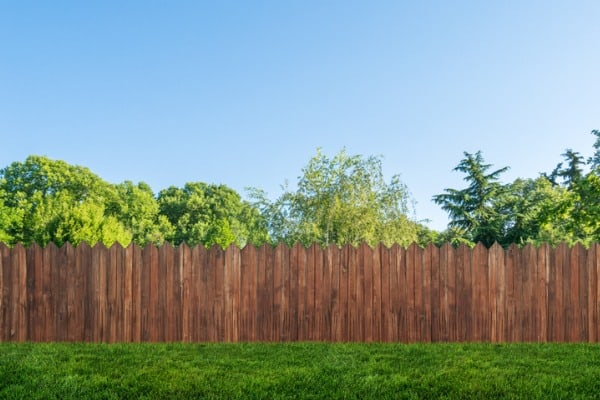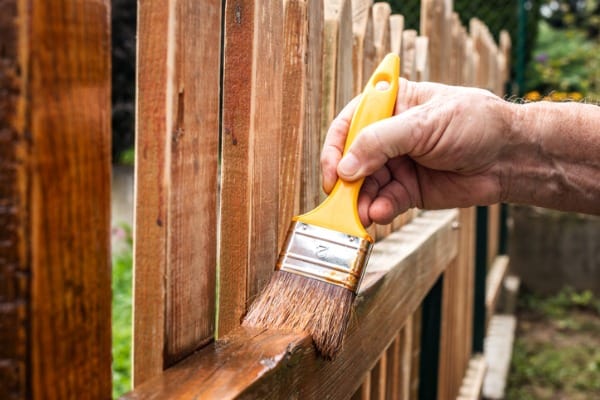
Good fences make good neighbors. However, before you install a fence, you will need to look into the zoning laws dictated by state, city, and county governments that outline technical standards the fence must meet.
These regulations take into consideration the aesthetic concerns of a neighborhood as well as safety. When you make better design choices, it can improve your relationship with other members of your neighborhood and community.
Here are some of the basic considerations when putting up a fence.
Quick Navigation
Know The Laws
A fence is considered a freestanding structure that is used as a boundary. Many cities regulate fences, hedges, and walls through zoning ordinances that homeowners and property owners must comply with.
Your residential fence permit application will be reviewed for compliance with meeting specific standards. Usually, you will have to provide the height, placement, and whether or not tree removal is necessary.
Height Limits
In order to receive a permit, you must state how high your fence will be. In many cities, fences may not exceed 6 feet in height, which is good to enjoy privacy. Keep in mind that the taller a fence is, the more surface area it has.
That means that there is more area on your fence that is susceptible to wind and the elements, which is something to consider if you live in an area known for thunderstorms.
Sewage Lines
If you want to build a fence on a sewage easement, then you will need to get a permit in order to begin construction.
Historic Landmarks
Historical landmarks may pose a challenge because they are protected and therefore untouchable. You will need to verify that your new fence will not cross any boundaries or change the appearance of a landmark before receiving permission to install it.
Avoid Utility Lines
Building over existing utility lines is forbidden, so it is advised you find out whether or not one is located where you want to install your fence.
Rules If You Live Near Parkways
Living near a parkway means that you need to consider the minimum required distance away from it and if the fence could obstruct signs related to the parkway, which is forbidden.
Know The Materials

While you may be busy ensuring that you are in compliance with all the rules and regulations, you also need to take some time to look into different fencing materials and which one will work best for you.
Some materials will be determined based on local regulations, but the most common types of fences are made out of wood, vinyl, concrete, or chain link fence slats.
Vinyl Fencing
Vinyl fencing is a popular material for homeowners who prefer spending as little time on the upkeep of their fence as possible. Although they do not come in a variety of colors – you will have to do with white – vinyl fencing maintains its color and may not require maintenance for several years.
Post caps are decorative caps that can be added to the top of fence posts to create a nicer look.
Wood Fencing
The most popular types of wood used in fence construction are pine, cedar, spruce, and Redwood. Wood is graded on its appearance in the following categories: premium, select, and standard.
Wood fencing can be reinforced to stand up to severe weather, and to prevent rot and damage over time by insects.
Chain Link Fencing
In comparison to the amount of lumber that would be needed to build a fence and the resulting costs, a chain link fence is far less expensive and easier for chain link installers to install.
When you need to build a fence on a budget, then you can't do any better than chain-link. Chain link fences are made of galvanized, aluminized, or vinyl-coated steel that can resist rust and dirt, so the only maintenance you may have to do on your chain link fence is to cut away plants that creep up along it.
With chain-link fences, there are certain requirements property owners need to be aware of before installation. For example, some cities in South Florida require that chain-link fences that are over 12 feet in height must be designed for high-velocity hurricanes.
The minimum requirements for posts and concrete dimensions will also vary based on the height of the fence.
Concrete Fencing
Cost-effective, durable, and available in a wide variety of designs, concrete fences can be stylish while providing privacy and protection. Concrete fencing is becoming much more popular among homeowners’ associations (HOAs) and architects.
Precast concrete fences take less time to build but provide long-term value. One reason they are so popular in areas such as Florida is that they are extremely durable in high winds and are impermeable to insects.
When considering materials for your fence, remember that you are responsible for the maintenance of your fence by law, so you will want to heavily consider your responsibility before choosing a material.
Admerconstruction.com advises that you speak with a professional who can help you decide on what is best for your budget, your commitment level to maintenance, and other factors.
Clear A Path
Before you measure around your property, you have to know its boundaries. Once they’ve been established, you have to get accurate measurements to know the exact area that your fence will cover.
Then, once you know the exact path you will be building along, you will need to clear it of any obstructions, such as large boulders. If your property is on a slope, then it may be worth hiring a professional.
Know When The Job Requires A Professional
Although you will save on labor costs when you install your fence, the amount of time that you will put into it may outweigh those savings.
Professionals enter your property with their teams of skilled workers who can work a lot faster than you. They are also more likely to know the permits and the tools necessary to get the job done.
When you hire a professional construction company, you are trusting experts who know the geography of the land and can help make sure you get the right permissions.
